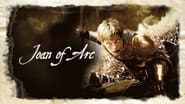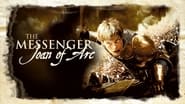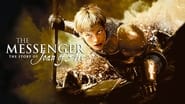justin-fencsak
When Luc Besson took on the legendary life of Joan of Arc, he did so with a big budget and a cast of thousands. The movie, unlike his previous movie, failed to light up American audiences while French audiences loved it. It didn't make a lot of money like Fifth Element did or even Lucy later on, yet it's an underrated movie about a famous woman who became a role model for generations of French women. The soundtrack is good, and the shots are amazing. Unlike his previous movie, this one is rated R, just like The Professional, yet it deals with religious themes.
Wizard-8
This French big budget attempt to compete with Hollywood is for the most part a disappointment. Certainly, it's not as bad as it could have been. The production values, for one thing, are solid; you really feel that you're getting a fairly realistic glimpse into the dirty and primitive medieval past. The battle sequences are also well done, showing that warfare has always been a hell on Earth. The movie also attempts to make the interesting argument that maybe the real Joan of Arc had not gotten the actual word of God... though this isn't examined to as great a depth as I would have liked. But that's a small problem compared to others found in the movie. The main problem with the movie is that for the most part it's too long and too slow, though there are curiously some important details here and there that are not examined in enough depth, not just the one I mentioned earlier. Another problem is that Joan in this movie often comes across as abrasive and obnoxious. I can believe that the attempt was to make her human and flawed, but director Luc Besson went too far in this direction in my opinion. Not a terrible movie, but you'll be tired and wishing for it to end some time before the closing credits start to roll.
relars1
A briskly-paced Bio of Joan of Arc, including numerous graphic battle scenes. Characters portrayed "With The Bark On" - soldiers of both English and French forces covered in mud, with horribly rotten teeth and decorated with scars - probably what people really looked like, in the early 1400s. Other scenes adding Realism include watching people eat food (something you don't normally see, in movies). Whatever they ate, it came from a boiling pot - broth, some chunks of veggies and whatever meat might be had...again, the unusual portrayal of common people eating was deliberate, and added "Texture" to the surroundings.Joan herself in the movie is all that she was portrayed to be in real life: A historical Fluke - a 17-year old girl, led by her "Visions", who becomes the leader of an army, and the "Difficult", she accomplishes quickly....the "Nearly Impossible", takes her a bit longer.I was a bit confused about the role of Dustin Hoffman. At first, I was sure he was an Angel, sent to counsel Joan as a sort of "Doubting Thomas" - leading her to a true self-examination of her motives - lending Objectivity to her track record, in an effort to get her to understand why Fortunes ran against her. But, he is listed as her "Conscience"...her own inner voice.I gave this movie a "9" rating. It will only be enjoyed by those who have an interest in History, or the life of Joan, but in anticipation that most of the audience will fit this description, I would say that 9 out of 10 will like it. The Rating above, of 6+, is probably a reflection of many viewers who were hoping for something else.....people who watch "Transformers", or Romantic Comedies.
Dave from Ottawa
...but it still made interesting viewing. More biographies of Jeanne d'Arc exist than of any other person, and any attempt to portray her rather incredible life as France's greatest heroine and martyr on film can expect to encounter a similarly large number of second-guessers. This is precisely what happened when this picture came out. Reviewers went on at length about what the picture should have been about, and how Joan should have been portrayed (and by whom), leaving readers to wonder what they thought of the picture that HAD been made. This tendency to review the picture they wish had been made is a classic failing in many critics and this picture seemed to bring it out especially often.The picture that Luc Besson made here deserves to be appreciated on its own merits. It is visually stunning, rousingly action-packed, and full of interesting period details. Yes, casting his supermodel wife Milla Jovovich in the lead was a risky choice, as her looks were hardly those of a typical medieval peasant. Yes, her performance did not resonate with the period the way one by a more classically trained actress might, although she was clearly never trying to be Ingrid Bergman. Still, Milla's hyperactive personality made her interesting and watchable as a historical person about whom so much has been written, who nonetheless existed so far back in the past that she lacks a strongly identifiable humanity. When somebody makes a better statue than a person, as Joan does from a contemporary viewpoint, odd casting choices can be forgiven if they work. Milla's twisty mannerisms, rolling eyes and whispery speech give the viewer constant occasions to ponder just how much of Joan's fanaticism came from genuine devotion to God and the church and how much was just an under-medicated personality disorder. This is actually one of the key scholarly issues surrounding Joan's life, and the picture brings it to the fore in its latter part as Joan herself tries to come to terms with her own claims of divine communication by means of a debate with Dustin Hoffman as her confessor-priest/conscience. That Besson takes no particular viewpoint here is an interesting choice, and one which actually helps the viewer to understand why Joan's story has compelled so many generations of historians.The political aspects of Joan's life and legend were also dealt with in a nicely balanced fashion. Like many figures in times when political and national alliances changed with the seasons, Joan herself blew back and forth between being tremendously useful to the French throne at times and dangerously inconvenient at others. Fame is a powerful commodity at any time, and the picture carefully tracked the rise and fall of Joan's fortunes as she watched hers be manipulated, leveraged and ultimately put on trial.I thought a lot of The Messenger and recommend it. Religious and historical scholars are advised to approach with caution.







